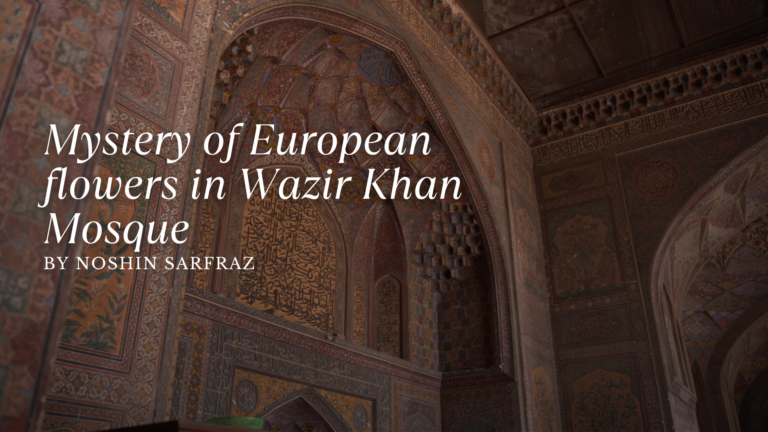By Noshin Sarfraz
The Wazir Khan Mosque has been included on the tentative UNESCO World Heritage list. Situated in the heart of the Walled City, the mosque invites scrutiny and analysis of its artworks.
lmuddin Ansari, known as Wazir Khan, built this mosque, with construction commencing in 1634. He initially served as a physician to Emperor Shah Jahan before ascending to the position of governor of Lahore. Wazir Khan strategically selected the site for the mosque at a point that was the central location of Lahore at the time.
During a visit to the mosque last year with an amateur Gardeners Club, the writer was astonished to find hundreds of painted fritillaries, reminiscent of those seen by her six months earlier in the Netherlands. Further examination revealed painted bearded irises and tulips as well. This raised the question: why were European flowers present in Lahore in 1634-35, when their cultivation in Pakistan in recent times was virtually unknown? Does this suggest that Indians were aware of these flowers some 400 years ago?
Dutch floriculturist, Peter La Graue, once arranged a workshop of the Cut Flower Growers of Punjab in Lahore many years back and imported 30 kinds of flowers from the Netherlands. He revealed, “We (the Dutch) stole tulip bulbs from Indians 400 years ago. We developed and improved them and now sell them all over the world whereas you people left them and consequently forgot how to grow them“.
Another important aspect of the fresco paintings in Wazir Khan Mosque is that during a one-year correspondence course in 1993 from the University of Pennsylvania, called Florestry and Floral Design, similar concepts were taught as can be seen painted in the mosque. During an attempt to read and identify the flowers with respect to their identification, design and colour, one arrangement is particularly worth mentioning. It took a month for this writer to figure out the concept and identify the flowers. The design has fritillaries, tulips, dianthus, hydrangeas, daisy, bearded jrises, marigolds and clarkia. The design concept is mille de fleur, which means thousands of flowers. This design features a collection of varied, but contemporary floral materials, radiating broadly from a central point and has a strong European flavour. In terms of density, the strongest area of this design is the center.
The most common shapes of mille de fleur arrangements are round and oval as can be seen in Wazir Khan Mosque’s paintings. There is no conscious attempt to establish line, however, the line is not totally absent but when it appears having less importance and emphasis.
The design calls for a large quantity of flowers and foliage. Floral compatibility, design shape and mood have to be considered when choosing flowers and there is a smooth transition from one size to the other.
The mille de fleur looks best when colour combinations are vibrant, alive and at times contrasting. The style is cheerful and uplifting and makes the viewer feel good about being alive to enjoy the beauties of nature. Container in this style should be in proportion to the total piece and it has a major influence on the arrangement size.
Noshin Sarfraz
President of Amateur Gardening Club.
Coordinator, Lahore Gymkhana Gardening Club



